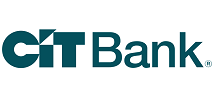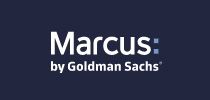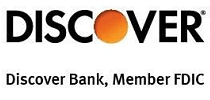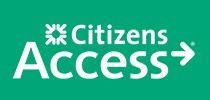If you just opened a savings account with your bank or credit union because it was the easiest option at the time, you’ve fallen into a trap.
OK, maybe that’s dramatic. But you’re definitely not making as much money on your savings as you could be. Traditional savings accounts with brick-and-mortar banks usually offer interest rates so low you won’t even notice the dividends trickling into your account no matter how much you’ve saved.
High-yield savings accounts you can open online are better in almost every way. They offer more convenience, higher interest rates, and more features than regular savings accounts — all (usually) without a monthly fee.
In 2023, online savings accounts make the most sense for almost everyone whether you’re saving for emergencies or just want to earn interest on your money until you’re ready to use it in another way. Keep reading to find the best online savings account for you.
What’s Ahead:
- Best online savings accounts
- Best overall: CIT Bank Savings Connect
- Best for emergency fund saving: Marcus Online Savings Account
- Best for beginners: Discover Online Savings Account
- Great alternatives
- How we chose the best accounts
- What is an online savings account?
- How do online savings accounts work?
- When can you take money out of a savings account?
- When should you open a savings account?
- How does savings account interest work?
- How to use online savings accounts
- Pros of online savings accounts
- Cons of online savings accounts
- Are online savings accounts safe?
- Online savings accounts vs. certificates of deposit (CDs)
- Online savings accounts vs. money market accounts
- Online savings accounts vs. high-yield checking accounts
- Summary
Best online savings accounts
The CIT Bank Savings Connect Account is an all-around great option for anyone looking for a high-yield savings account they can open online. It offers one of the best interest rates currently available and requires a minimum deposit of just $100. For a fee-free option with no minimums and same-day transfers, the Marcus Online Savings Account is a good fit. If you’re new to saving and value customer service and a positive mobile app experience, check out the Discover Online Savings Account.
You also can’t go wrong with an online savings account with SoFi, Citizens Access, or Barclays.
Best overall: CIT Bank Savings Connect
Pros
- No fees
- No minimum balance requirement
- Bank offers many savings products
Cons
- Deposit minimum
Features
- Minimum balance: $0
- Minimum deposit: $100
- APY: 4.60%
- Monthly fee: $0
CIT is an online-only bank that recently merged with First Citizens Bank, and it also happens to be one of our favorite places to (virtually) go for an online savings account. The CIT Savings Connect Account is a pretty basic savings account with a not-so-basic interest rate of 4.60%. The nice thing is this is a variable interest rate applied to all balances, so you don’t have to worry about keeping your balance up to qualify for the best rate. See details here.
In addition to no minimum balance requirements, there are no monthly service fees. You only need to deposit $100 to get started, which is pretty reasonable for an online savings account. You can make your first deposit as an electronic transfer from a linked account, wire transfer, or mailed check. Interest compounds daily.
CIT also offers a Savings Builder savings account, high-yield money market accounts, and traditional and specialty CDs if you’re looking for other savings options as well.
The CIT Savings Builder is also a high-yield savings account. It earns a tiered interest rate of up to 1.00% (See details here.) and encourages you to automate your saving. Check out our CIT Savings Builder account review for more information.
Open an account with CIT Bank.
CIT Bank. Member FDIC.Best for emergency fund saving: Marcus Online Savings Account
Pros
- No fees
- No minimums
- Same-day transfers <$100,000
Cons
- No mobile check deposit
Features
- Minimum balance: $0
- Minimum deposit: $0
- APY: 2.50%
- Monthly fee: $0
There are no fees or minimums for the popular Marcus Online Savings Account, another one of the best savings accounts of 2023. With educational resources to help you learn more about the best ways to save and a competitive interest rate regardless of the market, this fee-free high-yield savings account will always be an easy pick for us. You’ll earn 2.50% interest on any balance and there are no minimum deposit or balance requirements.
Marcus by Goldman Sachs is an online bank owned by Goldman Sachs Bank USA. Maybe you’ve heard of them? This bank was launched in 2016 and yes, it’s legit. Since opening its digital doors, Marcus has offered some of the best savings account interest rates every year.
We especially love the Marcus Online Savings Account for emergency funds, since it allows for same-day transfers of less than $100,000 between accounts. This could be really useful if you find yourself in a pinch and don’t have long to wait for the money to land in your checking. Typically, transfers take one to two business days to finish processing at other banks.
The Marcus app is another strength of this high-yield savings account. Not only is it sleek and user-friendly, but it comes with free educational resources, insights, and tools to track your saving.
Personal loans are also available through Marcus, should you ever find yourself in need of one and want to go with a bank you already know and trust.
Open an account with Marcus or read our full review.
Best for beginners: Discover Online Savings Account
Pros 
- No fees
- No minimums
- No fees for insufficient funds or excessive withdrawals
Cons
- No ATM cards
Features
- Minimum balance: $0
- Minimum deposit: $0
- APY: 3.90%
- Monthly fee: $0
The Discover Online Savings Account checks a lot of our boxes. It doesn’t come with pesky monthly fees, there are no minimum balance requirements, and there’s no minimum to open. As long as you fund your account with at least a penny within 30 days of opening, you’ll be good to go. This high-yield savings account pays the same variable interest rate on all account balances, and Discover’s APY almost always competes with the top online banks.
Discover takes “no fees” one step further than most. There are no fees for monthly maintenance or low balances, but there are also no fees for excessive withdrawals, which is unusual even for an online bank (but withdrawing more than six times a statement period is still frowned upon). Even expedited delivery of bank checks is free. This is as close as any account can get to being truly fee-free, which is part of what makes it great for beginners and those new to saving.
Plus, we’ve said it before and we’ll say it again, Discover knows how to treat customers. This bank is known for providing better customer service than many financial institutions, especially of their size. Agents are available 24/7 to assist you.
This online savings account from Discover also comes with some solid security features like fraud monitoring, text and email alerts, and the option to temporarily freeze your account.
Open an account with Discover or read our full review.
Great alternatives
We considered dozens of different savings accounts when creating this list and there were plenty that didn’t make the top three but still deserve a mention. We wanted to talk about those here.
SoFi Checking and Savings Account
Features 
- APY: 1.20% – 4.00%
- No-Fee Overdraft Coverage
- $250 sign-up bonus (limited time; terms and conditions apply)
SoFi might be best known for student loans, mortgages, and personal loans, but that doesn’t mean this well-rounded online bank isn’t in the running for the best savings account too. The SoFi Checking and Savings Account has a great rate of up to 4.00%, but the catch is that you have to set up a direct deposit to qualify for the highest APY.
This product is unique because it includes both a checking and savings account. You don’t have to sign up for these separately — they’re both yours once you open this bank account.
Setting up direct deposit can also help you earn a sign-up bonus. If you link direct deposit after opening this account and receive at least $5,000 in qualifying direct deposits within 25 days, you’ll get a sign-up bonus of $250. You also need direct deposit to qualify for No-Fee Overdraft Coverage –$1,000 in transactions, in fact. Basically, this account is best for people who have the option to link their direct deposit to their savings. Otherwise, check out the CIT Savings Connect account or one of the runner-ups.
Citizens Access Savings Account
Features
- APY: up to 4.25%
- $0.01 minimum deposit required
The Citizens Access Savings Account was in the running for us, but it doesn’t have as many perks like same-day transfers and the mobile app isn’t quite as impressive as our other picks. But you can open an account with a penny and you’re free to keep whatever balance you want to earn 4.25% interest (there are balance tiers, but right now all balances earn the same interest rate). You can fund this account via check deposit or online funds transfer from a linked Citizens Access or external bank account.
There are no fees and you can schedule recurring automatic transfers and/or direct deposits to keep your savings momentum going. If you live near a Citizens Bank branch, that could be a good reason to choose this account. Otherwise, try another account with no fees or minimums to get a little more.
Barclays Online Savings Account
Features
- APY: 4.00%
- Savings tracking tools
The Barclays Online Savings Account is another really dependable high-yield savings account with no fees or minimums. Barclays is a digital bank with very few products but consistently high savings account interest rates. You can use this account to save for different goals and use the app to track your progress toward them.
Overall, this is a really basic product with average liquidity for an online savings account. We just didn’t choose it for the top three because it doesn’t have any stand-out features or benefits that would make it better than the rest.
How we chose the best accounts
Our process for choosing the best savings accounts wasn’t just about finding the best rates, although this was an important factor. We also looked at:
- Convenience — how easy it is to open and manage an account
- Monthly fees — we favored accounts with fewer monthly fees and no service fees
- Minimum balance requirements — most of the accounts we chose require low balances to stay open and earn interest
- Minimum deposit requirements — we didn’t include any accounts with steep deposit requirements, because we don’t think a high minimum deposit should prevent you from opening a savings account
- Mobile apps — when you’re dealing with an online account, it’s important that the mobile app be almost perfect
The CIT Savings Connect Account, Marcus Online Savings Account, and Discover Online Savings Account were the all-around best options we found for saving online.
What is an online savings account?
Online savings accounts are just savings accounts you can open and manage online, either from a website or mobile app. Usually, you can apply for one in a matter of minutes.
An online savings account can be opened with a fully-digital bank — one that does all of its business online and has no brick-and-mortar branches — or from a traditional financial institution with online products.
As online banking becomes more and more popular, most financial institutions from big brick-and-mortar banks to tiny local credit unions are offering at least some of their products online. You can still open them in person at a branch if you prefer, or you can fill out a digital application.
It’s worth noting that these days, most of the best high-yield savings accounts are online only.
With an online savings account, you’ll do everything from opening the account to making transfers online. A traditional savings account can be opened in person or over the phone at a credit union or bank branch. You might have the option to manage it online, visit a branch, or give the bank a call to do things like make deposits or withdraw cash.
Digital savings accounts might come with more perks and features than traditional savings accounts, such as savings tools and educational resources, but it all depends on the bank you choose. They also tend to offer better interest rates than regular savings accounts, but we’ll get into that more in the pros and cons section later.
Read more: How to choose an online bank: 7 features to look for
How do online savings accounts work?
In most respects, online and traditional savings accounts work the same. Here’s how savings accounts work from the time you open one to when you start saving.
Funding
Funding options for an online account might include:
- Direct deposit
- ACH transfer
- Wire transfer
- Mobile or paper check deposit
- Cash deposit (less common)
With both online and traditional accounts, can link external or internal accounts for easy funding and transfers. Most online savings accounts also offer tools to automate your saving like recurring transfers. Some might even come with optional features like round-ups that round up purchases you make with your checking account to the nearest dollar and automatically put the rest into savings.
Deposit and balance requirements
Sometimes, an online savings account will have minimum balance and deposit requirements you must meet to keep the account and earn interest. The deposit minimum is how much you need to put into your account when funding it and the balance minimum is how much you need to keep in your account each day after it’s open.
You will want to meet deposit requirements as soon as possible after opening an account. Some banks may give you a period of time such as 30 days to meet the minimum. If you fail to satisfy minimum balance requirements, you may not earn interest, may be charged a fee, or may even lose the account (but not the money in it).
Fees
While brick-and-mortar savings accounts often come with many different miscellaneous fees, online accounts tend to charge very few. It’s getting rare to find an online account with a monthly fee at all, let alone one that can’t be waived with certain account activities (such as regular transfers or direct deposits).
And that’s a good thing. More often than not, it’s not worth it to pay for your savings account. After all, the point is to grow your money, and fees only cut into your interest earnings.
When can you take money out of a savings account?
You can usually take money out of a savings account at any time after opening it, but there is a limit to how many withdrawals you can make each month.
Under Federal Regulation D, transactions are limited to six per statement period for all savings accounts, even online-only ones. Although Regulation D has been suspended, most banks and credit unions still enforce it so that you’re not tempted to use your savings account like a checking account.
If you make more than six withdrawals from your savings account in one month or statement period, you’ll likely be charged a fee for each additional withdrawal. This is called an excessive transaction fee and it’s usually equal to about $10. Some banks may waive this fee the first time it happens, but it’s usually charged each time. In some cases, a bank may block a transaction that would put you over your withdrawal limit.
Usually, online accounts let you initiate transactions at any time from your phone. Transactions that count toward your monthly limit of six can include withdrawals, transfers, and ATM withdrawals.
When should you open a savings account?
You should pretty much open a savings account if you have any money whatsoever you can save. We recommend that everybody have at least one savings account.
Especially if you don’t already have an emergency fund with six months’ living expenses or more, don’t hesitate to open an online savings account. As soon as you have enough money to meet minimum balance requirements — which, again, are almost always really low or nonexistent for online accounts — take a few minutes to make it happen.
But why stop there? You might even think about opening multiple savings accounts to save for different goals. For example, since the holidays can be so expensive, you can keep a separate account specifically for gifting and travel and then transfer whatever you need to your regular checking account when the holidays come around. Just be careful that you don’t forget about any accounts you’ve opened and you’re still actively using each.
If the question is whether you should open a savings account or a checking account, the answer is probably both (if you don’t already have both). You’ll need a checking account for everyday spending and cash access and a savings account for emergencies.
But if the question is whether you should open a savings account or invest, the answer is a little more complicated. You should invest for long-term goals like retirement and leave savings accounts for shorter-term goals like saving up to buy a car or going on vacation. Investing offers much greater returns but carries more risk, so you really shouldn’t rely on your investment accounts for money you need in the near term.
The bottom line is that there’s no wrong time to get a savings account or two. Just make sure to do your research when choosing an account.
How does savings account interest work?
Savings account interest can be a little confusing when you’re first getting the hang of it, so let’s break it all down, starting with the differences between rates for online vs. brick-and-mortar banks.
Online vs. brick-and-mortar
Savings rates for online high-yield savings accounts are almost always much better than the savings rates from brick-and-mortar banks.
Right now, the average interest rate for savings accounts is 0.37% according to the Federal Deposit Insurance Corporation or FDIC. The FDIC looks at savings account rates from all financial institutions to determine this average, including high-yield online savings accounts, bank high-yield savings accounts, and all other accounts from banks and credit unions.
Just remember that savings accounts almost always pay variable interest rates. This means the interest rate is subject to change at any time and your account will earn different rates as the economy changes. Banks reserve the right to make changes to their rates without notice, and they usually do so at least every six months when the Federal Reserve changes interest rates.
With that said, the online banks with the best rates tend to stay on top. The savings accounts with the highest interest rates now also had some of the highest rates six months ago, even though those rates were completely different.
Next, let’s talk about how interest is actually calculated.
Interest vs. annual percentage yield
First, there’s the interest rate and then there’s the annual percentage yield. The interest rate is calculated as a percentage of your balance.
The annual percentage yield or APY is also calculated as a percentage of your balance but assumes that you’re not going to touch the money in your account for a whole year. This factors in compounding interest, which is what happens when your interest starts earning interest and that interest earns interest… you get the idea.
How rates are determined
Next, there’s the question of what rates you’re earning. Any savings account can either have a regular variable interest rate or a tiered interest rate.
If an account uses a tiered rate structure, that just means your balance will be used to determine which rate you’re eligible for. If a savings account earns the same rate on all balances, you’ll get paid what everybody else is getting paid.
In some cases, there can be extra rules for earning interest or getting the highest rates. For example, you might need to set up a direct deposit to get the best rate or be able to transfer a certain amount each month into your savings to get around tiered rate requirements and earn a better rate than you would with your balance alone.
How is savings account interest calculated?
Interest for an online savings account is usually calculated — or compounded — on a daily or monthly basis. If daily, the bank will determine your balance each day and use this to calculate the amount of interest you’ve earned for that day. This is then added to your account balance at the crediting frequency for your account (which is often monthly or quarterly).
If interest compounds weekly or monthly, the bank will calculate your average daily balance for the week or month and use this number to determine how much interest you’ve earned.
When in doubt, you can always use our calculator to see how much you can earn on different deposit amounts over time.
Read more: Savings interest calculator
Is savings account interest taxable?
Savings account interest is lumped right into the rest of your earned income, so you do have to report it on your taxes. It’ll be taxed at the same rate as the rest of your earnings, so just make sure to include it alongside your paychecks on your tax return and you’ll be covered.
Read more: How to file income taxes
How to use online savings accounts
Exactly how you should use a high-yield savings account will depend on your goals.
Most accounts come with basic functions like the ability to make transfers between different accounts, check your savings balance, see your transactions, and look at how much interest you’ve earned. But in terms of how you actually use your account to reach your savings goals, here are a few tips:
- Schedule automated transfers from a linked checking account to save in the background
- Split your paycheck to send a percentage of your pay to savings automatically
- Include savings in your budget as a regular expense
- Make sure you have at least enough saved to cover at least six months of your living expenses in the event of an emergency
Avoid using your savings account like it’s a checking account. If you find yourself dipping into your savings often to cover your everyday expenses, purchases, or regular bills, it might be time to reevaluate your budgeting and spending patterns. A high-yield savings account should be mostly used for money you don’t have an immediate need for so that it can grow with interest (and you don’t exceed withdrawal limits).
Consider opening multiple savings accounts if you have several goals you’re working toward. For example, you could keep one account to save up for a new car, another account for your next vacation, and a third account for emergencies. If that’s too many accounts to keep track of, choose an account that will let you create savings buckets and/or try downloading a personal finance app to help you stay organized.
Pros of online savings accounts
Trying to decide between an online savings account and a high-yield savings account with your local bank? Here are a few reasons why it pays to go digital.
Better interest rates
You can usually earn between five all the way up to 20 times more with an online vs. traditional savings account. This is because online accounts are much cheaper for banks and credit unions to operate, so they save a lot of money on overhead and can afford to reward users with higher interest rates. Big banks have to pay to keep their local branches running and their tellers paid, so their savings account rates (and other interest rates) tend to be worse as a result.
Fewer monthly fees
Another result of online accounts saving money is that they don’t have to charge you as many fees as traditional savings accounts to make a profit. Most high-yield savings accounts with online banks have no monthly fees and also don’t charge for things like low balances or account transfers. Online banks might also waive fees for things like overdrafts and excessive withdrawals.
Traditional savings accounts often charge you monthly maintenance fees just for having an account, which reduces your interest earnings and might even cause you to lose money.
More features and services
Online accounts offer more “cutting-edge” features and services as a rule than their brick-and-mortar counterparts. Savings tracking tools and insights, bill pay, and automated savings features are included with almost every mobile banking app from digital banks. The apps themselves tend to be easier to use and navigate too.
Plus, many online banks make it easier to access your money when you need it by letting you link with payment apps like PayPal, Google Pay, Apple Pay, Samsung Pay, Venmo, and Zelle. You don’t have to go to an ATM and withdraw cash or transfer the money to your checking account.
24/7 access to your money
Online banking is the foundation of digital savings accounts, so you can always access your account whenever you want to through the website or mobile app. It doesn’t matter what time or day it is. With the press of a button, you can add funds, make a transfer, or check your account balance.
And it’s not just online and mobile banking. Digital banks also tend to offer wider customer service hours and might even have 24/7 live chat functions. So if you have a question about your account or an issue you want to address right away, you won’t have to wait for regular business hours and dedicate a portion of your day to calling customer service.
Easy transfers
With online banking, you can sync your savings account with another bank account for easy back-and-forth transfers. It doesn’t even have to be an account with the same bank. You can link a checking account, investment account, money market account, or even another high-yield savings account and initiate transfers between them at any time. A lot of people like to automate transfers so they don’t even have to think about it.
While liquidity (or cash access) is pretty much the same for all savings accounts whether you’re talking about traditional or online, getting your money when you need it is usually faster and simpler online.
Cons of online savings accounts
Saving online rather than in a traditional savings account is more convenient for a lot of people, but there are some disadvantages to choosing an online account.
No local branches
Maybe this isn’t a disadvantage at all for you because you have no intention of stepping inside a brick-and-mortar branch to manage your account anyway. But for some, not being able to speak face-to-face with a banker about their account could be an issue.
If this is you, consider how important it is to you to visit local branches and weigh this against the pros of saving online. And if the main advantage of in-person banking for you is cash availability, you can always visit an ATM to withdraw from your online account.
Limited products
This one varies a lot by the financial institution. Some online-only banks have really small product suites, which could be for a number of reasons. For example, a bank might be newer and still very specialized or might intentionally stick within one niche in order to deliver a better customer experience. Others will offer loans, mortgages, checking accounts, and more in addition to high-yield online savings products.
Whatever the reason, having few products to choose from could be inconvenient for you if you like to do all of your banking in one place.
All that said, more online banks are transitioning to full-service banking. For example, Marcus by Goldman Sachs and Discover both offer checking and savings accounts, investment accounts, and even credit cards.
Limited deposit options
Online savings accounts might not offer as many funding options as traditional savings accounts. Paper checks and cash in particular are not commonly offered by online banks as funding options. However, mobile check deposit features are pretty standard with online accounts, though checks can take longer to process with online banks by a business day or two.
But this goes back to the lack of branches, which could be a barrier for people like business owners, and might go beyond just depositing cash. For example, you won’t be able to visit a branch to have a document notarized, obtain a bank signature guarantee, or deposit a large number of checks at once.
Technological difficulties
Since online savings accounts exist entirely online, technological difficulties can happen and impact your ability to carry out different account functions. For example, a mobile app can crash or you might find yourself locked out of your account due to authentication errors. Though these problems won’t usually affect your account itself or the money in it, they can be frustrating.
Are online savings accounts safe?
Digital savings accounts are FDIC-insured or NCUA-insured depending on whether you open them through a bank or credit union. The Federal Deposit Insurance Corporation or FDIC protects bank accounts and the National Credit Union Administration or NCUA protects credit union accounts. Most, but not all, financial institutions are insured.
With FDIC or NCUA insurance, your savings account is insured for up to $250,000. This means that if anything ever happens to your bank that causes them to lose their money, you won’t lose yours (up to that limit).
In addition to insurance, savings accounts typically come with protections such as account alerts to notify you of suspicious activity and bank-level encryption to keep your personal information private. Overall, online accounts are just as safe as any other deposit account as long as you:
- Maintain property security on your computer, mobile device, and anywhere else you’re signed in
- Don’t share your information with anyone about your account except over a secure line
We always recommend taking steps to lower your risk of identity theft for all of your financial accounts. Any account can be hacked if you’re not careful and don’t know how to spot the signs of a scam.
Read more: 7 signs you’re at risk for identity theft
Online savings accounts vs. certificates of deposit (CDs)
A certificate of deposit is like a savings account you can’t (or shouldn’t) touch. It locks up your money for a specified amount of time, referred to as a term. When a CD reaches the end of its term, it “matures” and you can take the money out. If you take money out of a CD that hasn’t matured yet, you’ll pay an early withdrawal penalty fee equal to the interest you’ve earned over a certain number of months.
Many online banks that offer high-yield online savings accounts also offer high-interest money market accounts and CDs. And as a rule, these also tend to be more competitive than the products available from traditional banks.
If you have a longer-term savings goal that you have some time to reach, a CD can be a great choice. They usually have better interest rates than even the best high-interest savings accounts, so you can earn more money while you save. But in addition to not being able to withdraw funds, most CDs don’t let you add funds. You have to know how much you want to deposit when opening one. This is why CDs are not a good fit for ongoing savings.
Choose a high-yield savings account if you want to keep making regular contributions to your savings, you have a savings goal you hope to meet soon, or there’s a chance you’ll need the money for an unexpected expense. The only time we could argue a CD could be a better option for short-term saving is if you’re talking about a no-penalty CD. The benefit is in the name: you don’t have to pay a penalty fee if you withdraw before the term is up.
Having both savings accounts and CDs can give you a good mix of cash liquidity and short- and long-term savings. Plus, you can take advantage of the best interest rates for both. A good strategy to balance savings accounts and CDs is to keep your emergency savings in a savings account and your savings for specific goals in the future in CDs.
Read more: Best CD rates of 2023
Online savings accounts vs. money market accounts
A money market account or MMA is a special type of savings account. MMAs tend to require a higher minimum balance and deposit but pay a better interest rate than savings accounts typically do.
While online savings accounts and money market accounts are similar, there are some key differences between the two. These are:
- Interest rates
- Deposit requirements
- Fees
- Liquidity
Money market account rates are usually variable like savings accounts but may be slightly or significantly higher. Right now, the average interest rate for money market accounts is 0.18% compared to 0.17% for savings. There are times when this difference is much greater and times when it’s nonexistent — you can thank the market for that.
Another big difference is that money market accounts often require you to deposit more money. This minimum could be anywhere from $500 to $5,000, even for online accounts. Money market accounts are more likely to have a monthly maintenance fee as well, which may or may not be waivable by keeping a higher balance.
Finally, savings accounts are a little more liquid. While both online savings accounts and money market accounts both have the same transaction limit of six per period, money market accounts might make you wait a few weeks after opening to make your first withdrawal.
Money market accounts can be a better choice for high account balances. If you plan to keep a lot of money in there, you’ll likely be rewarded with a higher interest rate if your bank uses a tiered interest rate structure. For smaller balances and people who want more cash access, a high-yield savings account with an online bank is probably the best option.
Online banks almost always offer both money market accounts and high-yield online savings products. So if you find an online bank with a great rate for one, check out both products.
Read more: Money market vs. savings account: Which one should you use?
Online savings accounts vs. high-yield checking accounts
What about interest-bearing checking accounts? When does it make more sense to choose one of those over a high-yield savings account?
Really, it depends on the interest rates. The national average interest rate on interest checking accounts is 0.06% at the moment compared to 0.35% for savings accounts. Even though both of these are pretty lousy, savings rates are less lousy. High-yield savings accounts almost always earn better interest than high-yield checking accounts, with “high-yield” being the most relative term there ever was.
But of course, checking accounts don’t have the same transaction restrictions as savings accounts, so they’re a lot more liquid. While savings accounts only sometimes come with ATM cards, checking accounts always come with debit cards that can be used in stores, at ATMs, and online. Choose a checking account if you know you’re going to need the money and use the savings only for what you can do without (for now).
Read more: Best high-yield checking accounts compared
Summary
When looking for the best online savings account, remember that it’s about more than just the best rates. You should also find an account with little to no fees, great cash access, a variety of funding and transfer options, and online features you can actually see yourself using to meet your savings goals.
Online banks are the future of saving. Sign up with one today.


